Why Termite Mounds are Mind-Blowing Metropolises
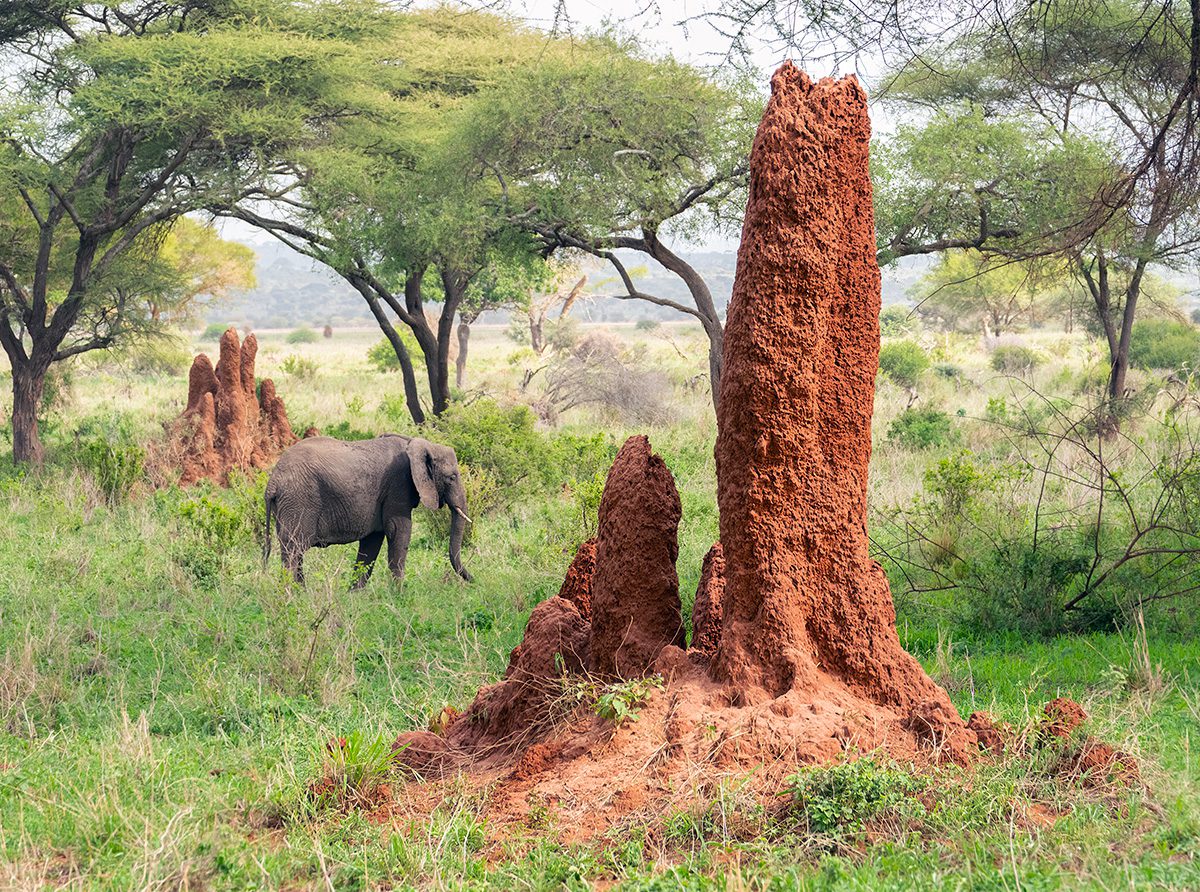 Termite mounds in Tarangire National Park
Termite mounds in Tarangire National Park
Termite mounds: these humble clay heaps host insects that are every homeowner’s bane. In the wild, they’re nothing short of ecological miracles.
On safari in the Serengeti, Ngorongoro, Tarangire and beyond, you’ll see hundreds of these mini civilizations jutting from the dirt. Literal tons of termites–up to 1 million individuals–live in each one, cooperating to build, farm, defend and survive.
Complete with a caste system, agricultural supplies, military and air conditioning, here’s why termite mounds are the wild’s most mind-blowing metropolises.
Incredible Architecture
Also known as “castles” or termitariums, termite mounds are extremely intricate systems of tunnels, nests, chambers, farms and nurseries that extend far below ground. They can take up to five years to build and often last for decades, centuries and in extreme cases, millennia.
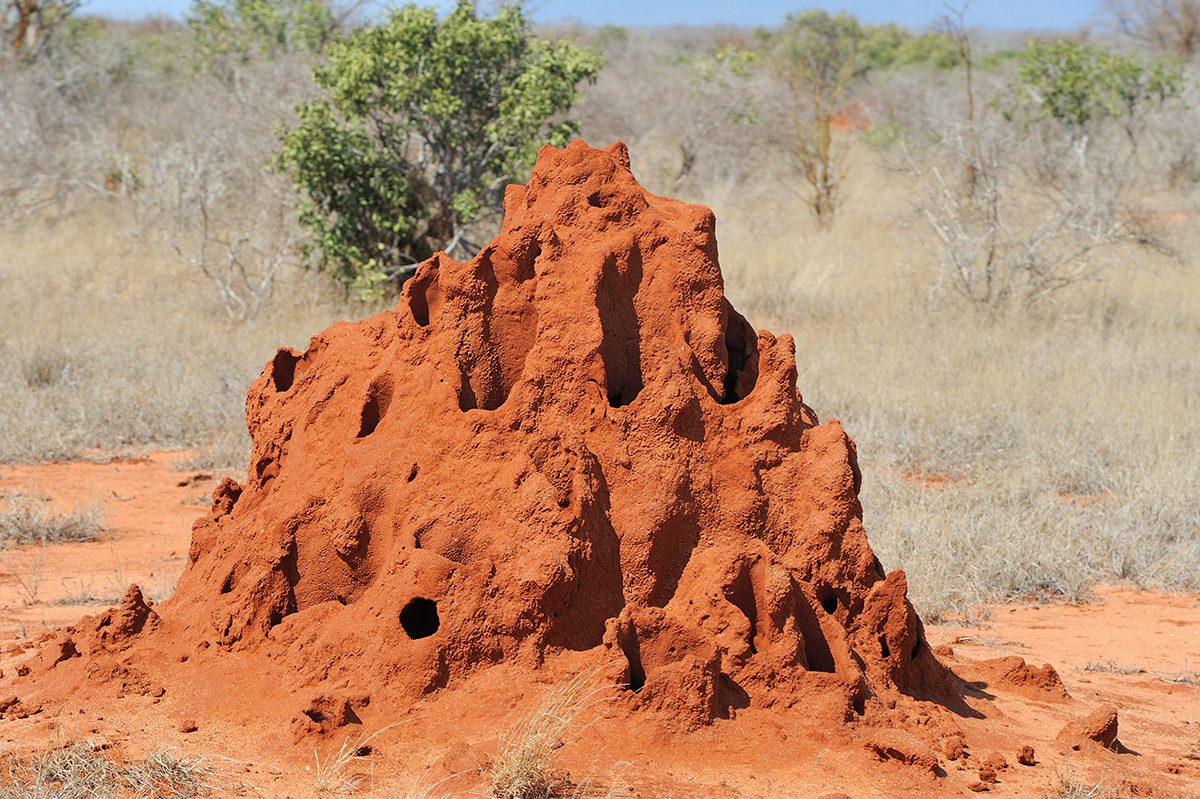
They can be up to 17 feet tall and 10 feet across, often featuring “chimneys” and numerous vent holes to maintain a critically stable 87° Fahrenheit–insect air-conditioning!
The Fungus Farms
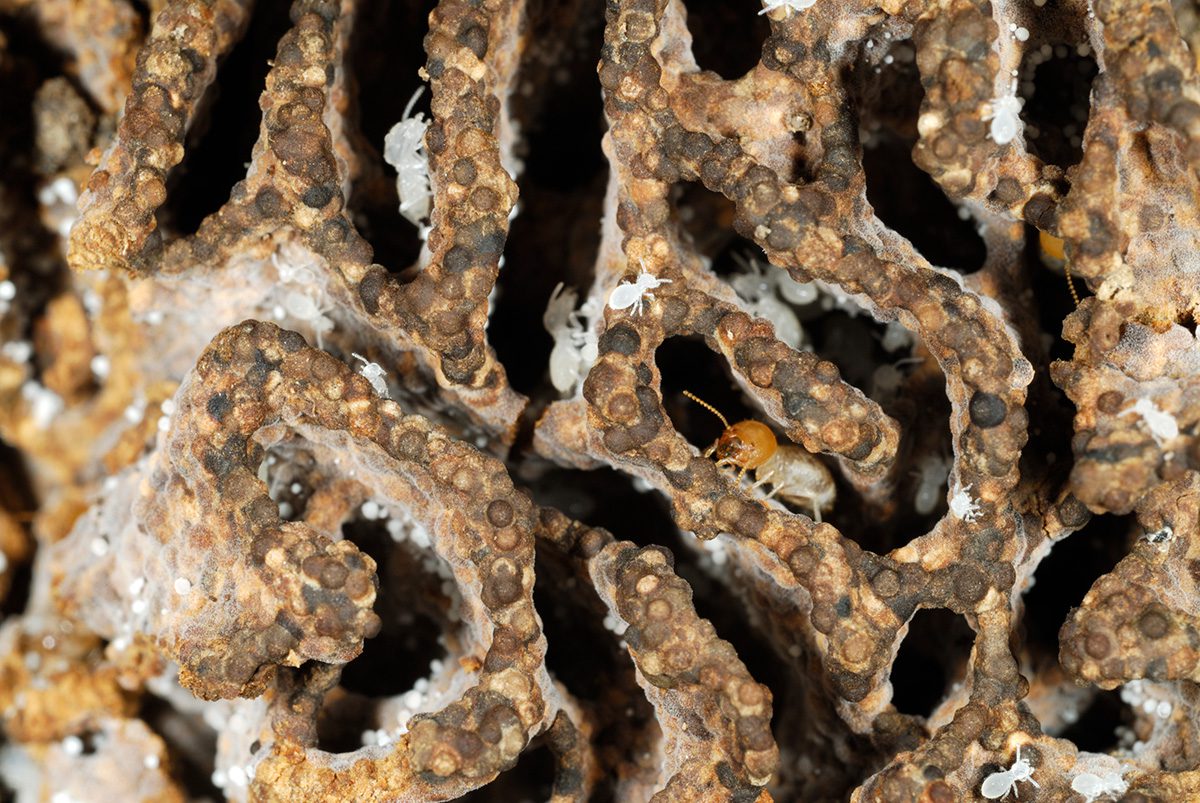
Feeding a city is no easy task. While termites have special storage chambers for wood (their primary food source), they also maintain expansive, primitive fungus farms to keep the colony running. Worker termites carry indigestible wood and leaves back to specialized chambers in the colony, where the fungus can take hold and grow.
Talk about organic!
An Ecological Cornerstone
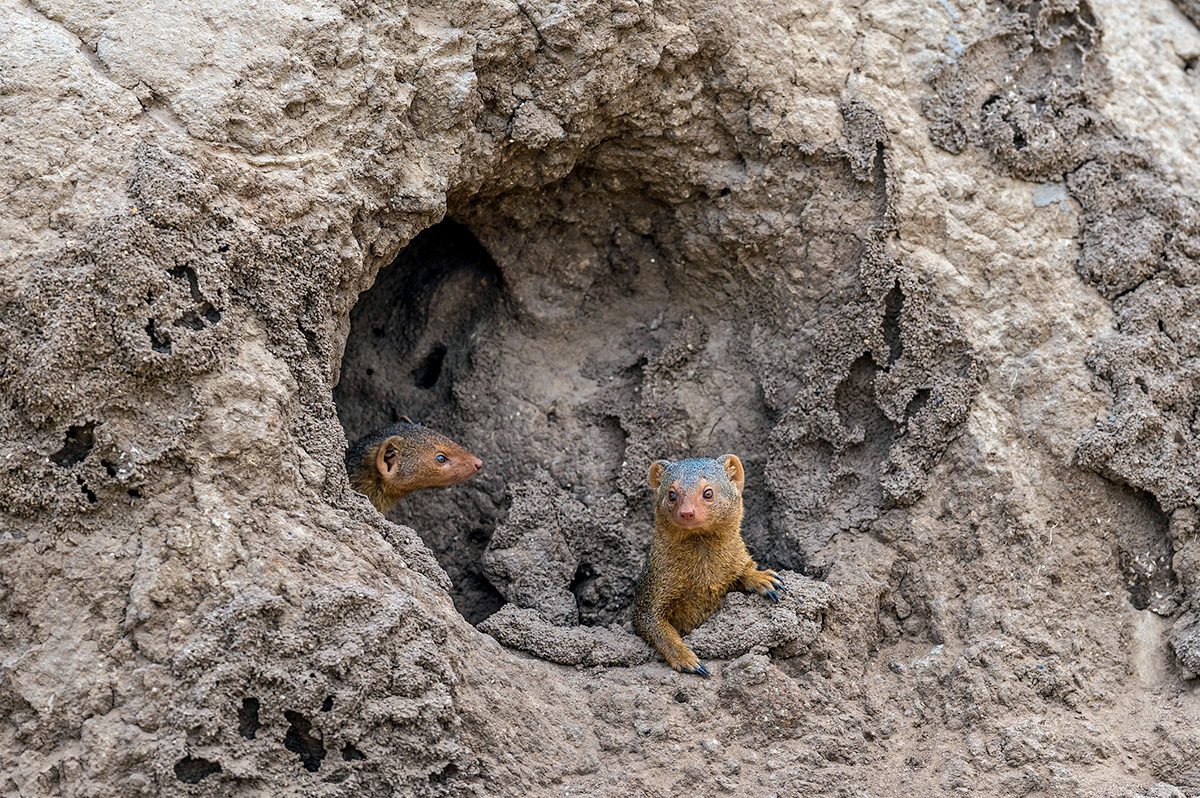 Dwarf mongoose borrows in termite mound
Dwarf mongoose borrows in termite mound
Termite mounds are amazing ecological champions: they replenish the earth’s nutrients, create biodiversity and help many bigger species survive. That’s because:
- Termites recycle dead plant, animal and fecal matter.
- Termites aerate and fertilize the soil.
- Termite mounds allow predators and prey to scout their surroundings from an advantageous height.
- Many animals, such as hyenas, warthogs, mongoose and jackals, use termite mounds to create their burrows.
- Termites are nutritious critters for animals such as the aardvark, pangolin, frog, lizard, snake, mongoose and humans!
While termites are dreadful pests back home, on safari, you can thank them for helping their environments flourish and become more fully alive.
Termite Society
Termites have an incredibly robust caste system, where everyone fulfills a designated function for the whole.
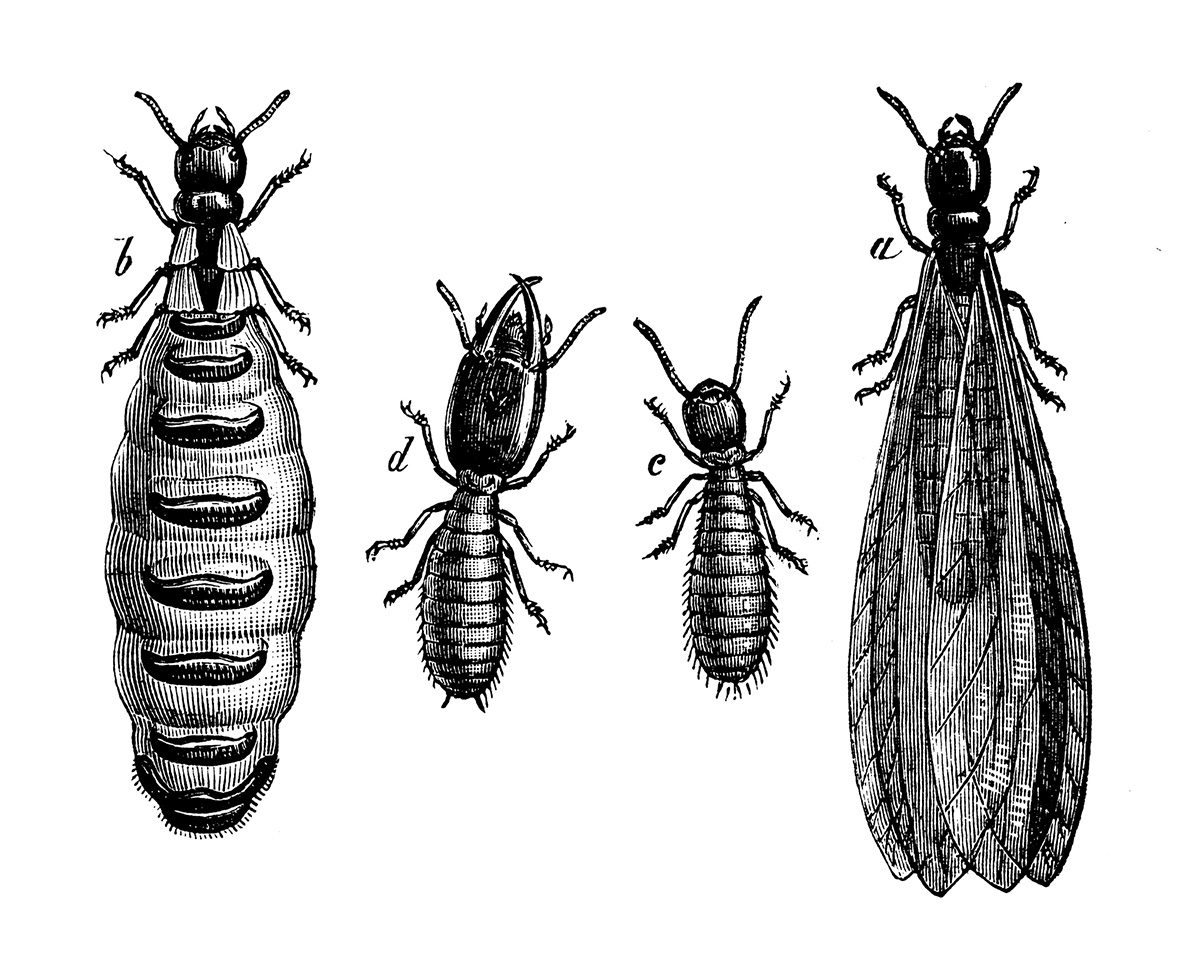
Workers (figure c above)
Wingless, light-colored and soft, workers are the most common type of termite and perform the day-to-day business of colony survival. They:
- Feed soldier termites and aid the queen with moving around the colony.
- Grow, gather and store the colony’s food.
- Nurture adolescent termites and nymphs.
- Build the colony and maintain its structure, moving about 550 pounds of soil per year.
- Groom other members of the colony, keeping everyone clean and preventing disease.
Not to mention, they’re blind! They rely on pheromones, environmental cues and their sense of touch to navigate and communicate.
Soldiers (figure d above)
Soldier termites are fearsome foes with strong bodies, large pincers and huge, dark heads (amazingly, they’re also blind). They use their heads, literally, to block ants and termites from other colonies from entering their own. If this fails, they are well-prepared for battle.
Soldiers are selfless, often sacrificing themselves for the colony’s defense. This is especially common against tough enemies: for example, it takes about five soldier termites to fight one ant.
When the dust settles and the battle is done, surviving soldiers head back to the mound and let the worker termites feed them, because the structure of their bodies hinders them from eating on their own.
The Queen and King (figure b, figure a above)
Because worker and soldier termites are sterile, it’s up to the queen and king to reproduce for the entire colony. The king fertilizes the queen, and each day, the queen lays up to a staggering 43,000 eggs. A personal entourage of soldiers protects her, meanwhile workers carry her eggs away–one egg every three seconds–to nearby nurseries. Other workers clean and feed her.
After hatching, her nymphs spend their lives in the nest, raising larvae or helping acquire food. Some become workers and soldiers. A small number develop reproductive organs and wings, at which point they will emerge from the nest, find a mate and found new colonies elsewhere.
Seeing Termite Mounds on Safari
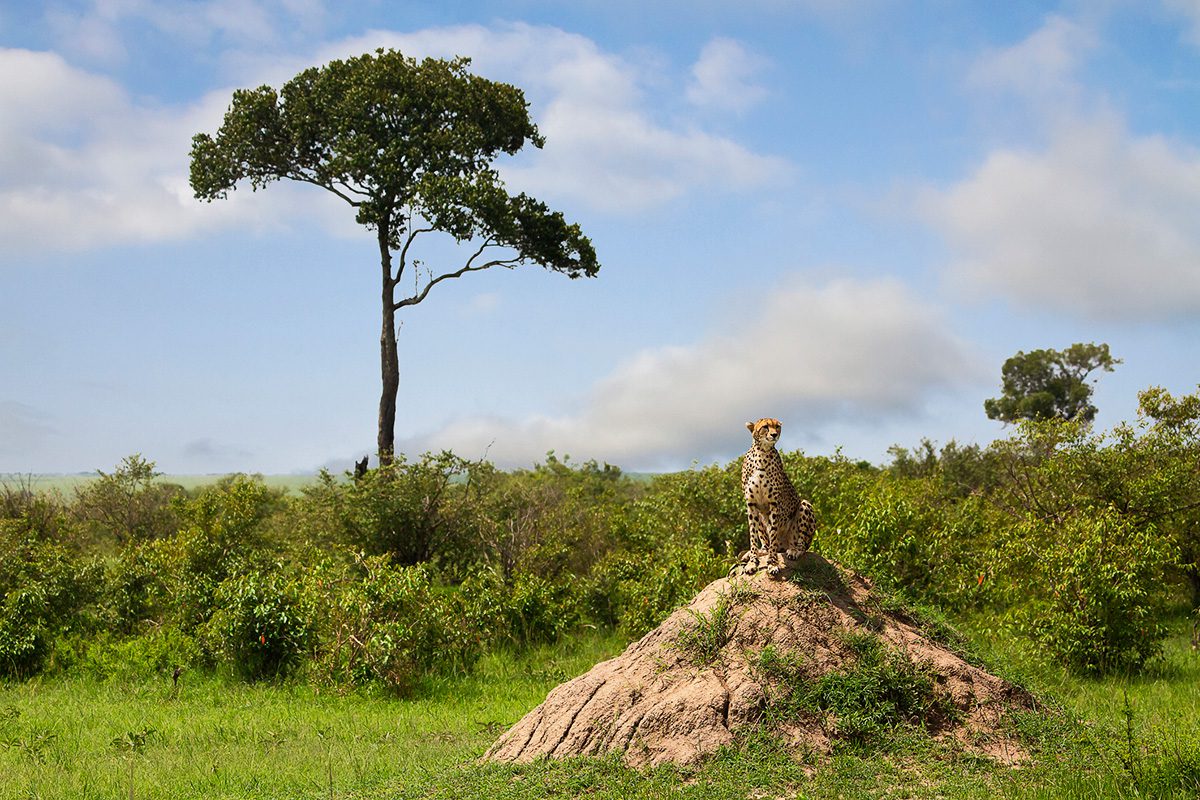 Cheetah uses termite mound to get a better vantage point of the plains
Cheetah uses termite mound to get a better vantage point of the plains
When you’re on safari, you’ll see awe-striking, goliath animals: elephants, giraffes, lions and more. But it’s worth taking time to slow down, zoom in and marvel at the termites, and the complex worlds they built beneath your feet.
You’ll see termite mounds everywhere on safari–from the northern Serengeti to Tarangire’s swamps!

